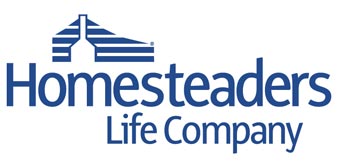Report Reveals that 1/3 of Death Certificates List Incorrect Cause of Death. Learn Who’s Responsible…
Recent studies indicate alarming rates of misreported causes of death on death certificates. Though more studies must be conducted to determine the extent of the problem, research shows that as much as a third of death certificates issued in the U.S. list an incorrect cause of death. These errors tend to occur when healthcare professionals in hospitals are tasked with determining cause of death with incomplete or inadequate information about the patient. In most hospitals it falls to resident physicians, the newest and most inexperienced doctors, to fill out death certificates, placing them at a further disadvantage as they have the least real-world experience with the variety of reasons a person can die. Since one-third of Americans die in hospitals, mortality rates and causes reported by physicians in hospital settings play a significant role in setting public health policy. Unless foul play or unnatural causes are suspected (in which case a coroner or medical examiner makes a determination), physicians complete the medical portion of a death certificate before passing it on to the funeral director who registers it with the state.
The first major study on this issue was conducted by the New York Health Department (NYHD) in 2010, when they noticed suspiciously high rates of coronary disease deaths in the city. Health Department officials noted that reported rates of coronary heart disease deaths didn’t correlate with common risk factors, which put New Yorkers at lower-than-average risk for heart disease and associated deaths. Furthermore, because heart disease and stroke have similar risk factors, high rates of coronary disease and low rates of stroke shouldn’t coexist the way they did in New York statistics.
To find the source of this discrepancy, the NYHD conducted a blind review of over 400 cases at 70 New York hospitals to clinically evaluate the cause of death, and found a 91% overreporting of coronary disease as COD.
Similar studies in Missouri, Maine, and Vermont also showed high rates of misreported COD. The Vermont study sampled 600 cases and found 51% contained “major errors,” and 60% listed an incorrect “underlying cause” of death. This study found no difference in the likelihood of error if the reporter was a physician versus a non-physician. However, the potential for misreporting was higher for deaths that occured in hospitals as opposed to in private homes, pointing to a lack of information as a contributing cause of inaccurate reporting, particularly for underlying causes.
The inaccuracies are often the result of an overly rigid reporting system and lack of adequate education for those health professionals filling out death certificates. When patients die at hospitals that don’t know their medical history, the cause of death may be difficult to determine. Even so, most reporting systems require both an “immediate” and “underlying” cause of death, forcing physicians to choose from a limited set of options or guess based on limited information. In a 2010 study conducted by the Centers for Disease Control (CDC), half of physicians surveyed admitted that they had knowingly reported an inaccurate cause of death.
Dr. Barbara Wexelman, who led the CDC research, attributes the errors to faulty systems. “Most doctors don’t wake up in the morning and think, ‘I want to lie on a death certificate today’,” she asserts. Even those doctors who “knowingly” reported an incorrect cause of death did so for what they perceived as valid or unavoidable reasons.
The bigger problem
Because death rates are used by agencies such as the CDC to study emerging illnesses, identify disease outbreaks, and set public health policy, a high level of misreported deaths can seriously affect public health initiatives and resource allocation. Raising awareness of the connection between reported COD and resource allocation is an important step toward emphasizing the importance of accurate reporting and combating this problem.
How do we solve this?
Health experts also suggest broad changes to the reporting process and the education of everyone involved. According to Dr. Wexelman, “Reform is needed both in the training and education of residents and in the system itself.”
Many doctors agreed that the limited number of causes of death available on forms was a leading cause of inaccurate reporting, forcing them to choose from incomplete options. Allowing doctors more flexibility in how they report causes of death and the list of causes available to them can help pinpoint cause of death more accurately and avoid misreporting. Improved education can also emphasize the need for accurate reporting and properly train doctors in identifying causes of death. In a 2007 trial, resident physicians who received a training intervention workshop significantly improved their reporting accuracy.
Improving the veracity of mortality statistics depends on institutional changes as well as the commitment of individual physicians to accurate reporting. To support doctors in correctly filling out certificates, hospitals and institutions can remove barriers such as limiting multiple-choice lists and mandatory reporting, improve doctor access to patient histories, and regularly educate physicians on the importance of mortality statistics and reporting guidelines.
Article by Connecting Directors contributor Diana Eliza Ionescu




